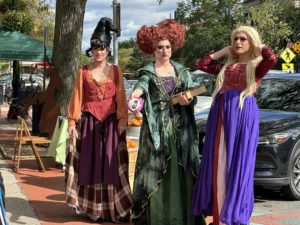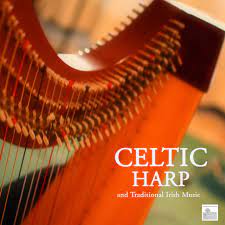I love horror. Not gore, so much, but the creepy stuff. Give me dark family psychology (gee I wonder why), cursed objects from dusty archives, the uncanny blankness of our modern built environment and the soulless things lurking beneath its plastic surfaces. Lately I’m especially drawn to historical atrocities with a supernatural twist, a sub-genre where a lot of writers of color are currently making their mark.
I read every horror anthology I could get my hands on in the 80s and 90s, mostly from school and public libraries because our family was broke. I knew I was “movin’ on up…,” as The Jeffersons theme song went, when I could afford to buy the annual Year’s Best Fantasy and Horror trade paperback for $25.
Nowadays I get most of my literary scares from NetGalley or thrift stores, a nice mix of old and new. Honestly sometimes the most chilling aspect of these pulp paperbacks is how much sexism and homophobia you could get away with in the 1990s.
Certain flavors of horror don’t appeal to me, but this is my personal taste rather than an aesthetic pronouncement. I don’t usually pick up zombie stories because (I assume) they will be gross and violent. Same for serial killers, whose psychology is not as interesting as they themselves think it is. I can’t picture myself as a character in a post-apocalyptic survival novel, because it’s drearily obvious that I would immediately die from falling into a hole, just like I do in Minecraft every time my son demands that I play. Or else I’d be the person killed and eaten by my starving companions in the first week for complaining too much about the lack of flush toilets.
With respect to horror fiction based on real-life historical injustices, I find these books uniquely satisfying because they have a purpose beyond momentary thrills. I learned about the Negro Travelers’ Green Book from Lovecraft Country. Victor LaValle’s cosmic horror Western Lone Women, one of the best books I read this year, taught me about the diversity of 19th-century frontier homesteaders. Often, the terror and suspense in these books arise from oppressive forces that persist in the present day. The ghosts and monsters, on the other hand, may be a powerless group’s unlikely allies. If cosmic justice isn’t forthcoming, at least coding these stories as horror is refreshing in its honesty, compared to the whitewashed narratives of progress in our “realistic” history books.
A standout in this category is Tananarive Due’s The Reformatory, coming out Oct. 31 from Gallery/Saga Press. Set in rural Florida in 1950, it’s based on a horrendous “reform school” where one of her ancestors perished as a teenager. Robbie, the 12-year-old son of a Black labor activist, is sent there on trumped-up charges to bring his father out of hiding. The sadistic warden takes a special interest in the boy because he can see the ghosts of other young inmates who were killed by beatings, rape, and hard labor. Capturing the ghosts will allow the warden to cover up his crimes. In return, maybe he’ll let Robbie go free. But the ghosts are going to make Robbie a counter-offer that he’s afraid to refuse.
This week in Jessica Dore’s Tarot newsletter, I came across a citation to Saidiya Hartman’s essay “Venus in Two Acts”, which is a meditation on the simultaneous impossibility and necessity of reconstructing the voices of sexually exploited female slaves. Hartman’s remarks about the archives’ “libidinal investment in violence” resonated with themes in The Reformatory, where the warden keeps a secret stash of photos of the boys he’s abused. Robbie and his allies hope to use this evidence against their tormentor, yet they know there’s no guarantee that the images will inspire empathy, let alone effective action from the authorities. The archive is contagious and uncontrollable as the Necronomicon, titillating the white gaze, while infecting Black viewers with further traumatic images.
Comedian and horror movie director (a combo that makes sense if you think about it) Jordan Peele is the editor of Out There Screaming: An Anthology of New Black Horror, just published last week. This one was a mixed bag, for me, with some amazing stories and others that didn’t have enough of a point, but I recommend checking it out anyhow. Tananarive Due contributes another solid tale based on Jim Crow history, this time about Freedom Riders seeking supernatural aid to fend off white supremacists. Nnedi Okorafor’s elegiac story of a Nigerian-American haunted by an Old World deity contains a wry moment when two white Karens in her neighborhood see the monstrous figure in her driveway and demand that she show them her parade permit! You may see the twist coming in Terence Taylor’s virtual-reality nightmare “Your Happy Place” but it’s no less horrifying, because you know that if the technology existed, America would happily sign onto this method of extracting prison labor.
Also out this month, Raul Palma’s A Haunting in Hialeah Gardens (Dutton) is a tragicomic ghost story about an impoverished Santeria priest in Miami who promises to exorcise his debt-collection lawyer’s McMansion in exchange for loan forgiveness. The book is both a Dickensian satire of capitalism and a poignant exploration of survivor guilt, as the priest learns that some emotional debts must be lived with, not expunged.
A pulp anthology that deserves to be rediscovered is Women of Darkness (Tor/Tom Doherty Assocs., 1988), edited by Kathryn Ptacek. Intentionally feminist without being didactic, this collection of horror stories by then-contemporary women writers holds up better than its male-dominated counterparts from this era. Lisa Tuttle’s haunting yet humorous tale “The Spirit Cabinet” reminds me of Carmen Maria Machado’s “The Husband Stitch” in how even a nice husband can dismiss his wife’s perceptions, with fatal consequences. Kit Reed’s “Baby” explores the darker side of the all-consuming bond between mother and child. Elizabeth Massie’s grotesque “Hooked on Buzzer” deals karmic revenge to people who exploited a disabled young woman.
From the same period (and batch of tag-sale paperbacks), I enjoyed Shadows 6 (Berkley Books, 1983), edited by Charles L. Grant, and Supernatural Sleuths (Roc, 1996), edited by Martin H. Greenberg…but with the caveat that both include some cringey sexism and ethnic stereotypes. Some of the new-to-me authors whose work I especially liked were Leslie A. Horvitz, Jack Ritchie, and Lee Killough.
The anthology Dark Fantasies (Legend, 1989), edited by Chris Morgan, evokes the gritty and despondent vibes of Thatcherite Britain, with contributions by Ramsey Campbell, Nicholas Royle, Tanith Lee, Lisa Tuttle, Ian Watson, and others. In a lot of these tales, you’re not sure if something supernatural is happening or the characters have had a psychological breakdown, but either option is suitably unsettling.
Out of Tune, Book 2 (JournalStone, 2016), edited by Jonathan Maberry, is an anthology of horror and dark fantasy stories that each take inspiration from a spooky folk song or murder ballad. Books organized around a gimmick tend to be uneven in quality but this one, in my opinion, was consistently strong. Contributors include Cherie Priest, Delilah S. Dawson, and David J. Schow. Pretty sure I got this one at the NecronomiCon Providence vendor hall in 2017. The Young Master has graduated from “Paw Patrol” to “Wednesday Addams” (and not a moment too soon) so the stars may align for a family trip to NecronomiCon next August.

Just another Sunday afternoon in Northampton.




